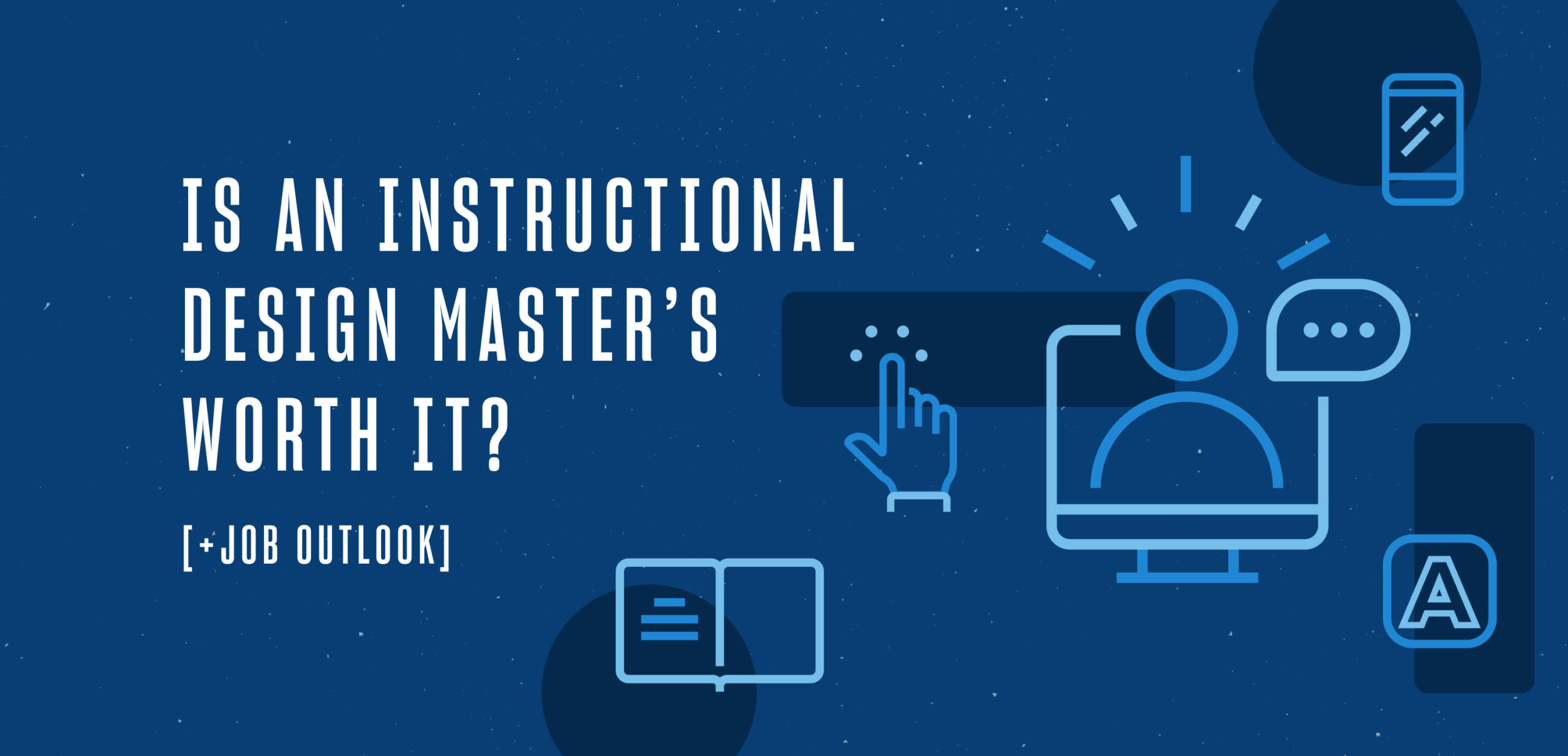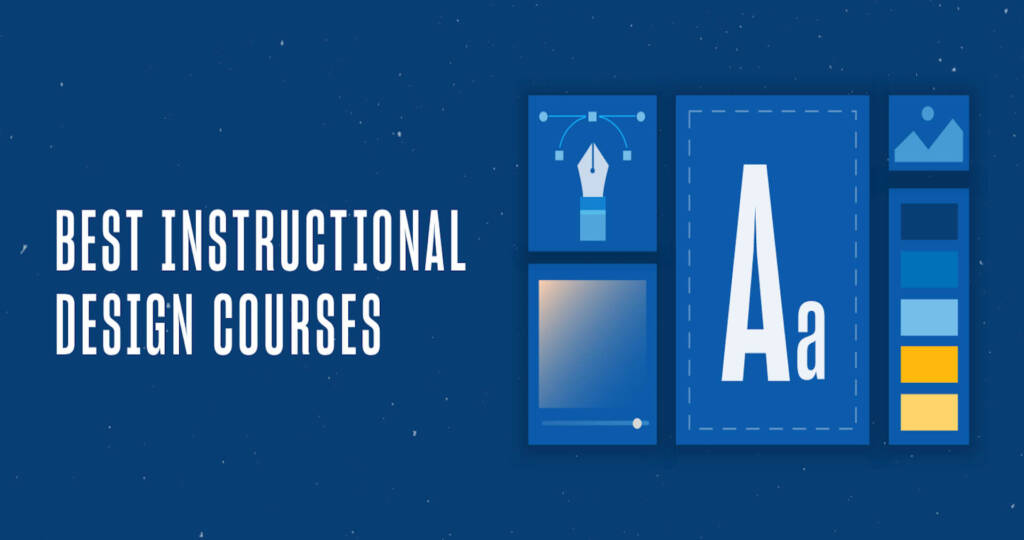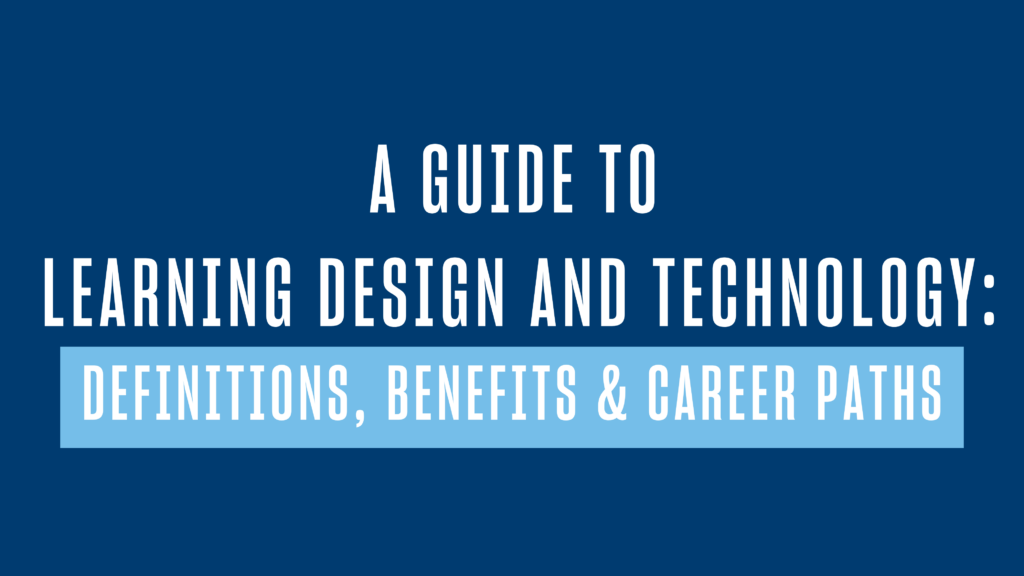Instructional and learning design — long-standing functions in education — have experienced a recent surge in prominence due to the widespread integration of digital technologies. These fields are integral in developing and implementing robust learning systems that cater to contemporary educational needs, blending the essence of learning theory with the practical applications of technology.
As eLearning Industry reports, there has been a significant increase in demand for instructional design professionals across various industries due to the shift toward online learning precipitated by the COVID-19 pandemic. This trend has continued even after the pandemic, as more industries recognize the importance of effective instructional design in making learning accessible and efficient.
The U.S. Bureau of Labor Statistics estimates a projected growth of 7% in the employment of instructional coordinators from 2021 to 2031, which is about as fast as the average for all occupations. There are expected to be about 20,900 openings for instructional coordinators each year, on average, over the decade, with many of these openings resulting from the need to replace workers who move to different occupations or exit the labor force.
With the growing significance of these roles, professionals working in this field are increasingly inclined to invest in advanced education to bolster their career growth. A master’s degree in instructional design (ID) can provide comprehensive knowledge and a dynamic skill set, both essential components for distinguishing yourself in this competitive landscape.
Continue reading to explore the key facets of a master’s degree in instructional design, its potential benefits, career prospects and overall worth for those considering this path.
What Do Instructional Design Master’s Degrees Cover?
Instructional design master’s degree programs are curated to offer in-depth knowledge and a comprehensive understanding of this field of study. They delve into the foundational theories and current methodologies in instructional design, equipping students with the skills necessary to excel in various educational and professional settings.
The primary focus of these programs is:
- In-depth exploration of instructional design theories: Master’s-level programs provide a detailed study of the fundamental theories and contemporary concepts related to instructional design.
- Real-world application of theories: Emphasis is placed on the application of these theories to practical scenarios. Students often complete project-based assignments, applying theories, concepts, and best practices in a real-world context.
In addition to the theoretical framework, comprehensive instructional design programs also focus on skill development and practical exposure:
- Exploring the latest software and technology: As part of their training, students gain hands-on experience with industry-leading technology tools relevant to instructional design.
- Applying best practices: These programs facilitate active engagement in instructional design best practices. This knowledge helps students create compelling and relevant learning experiences.
- Imparting knowledge through coordinated curriculum: A significant aspect of these programs is learning how to disseminate knowledge to others through a well-structured curriculum, enhancing the overall teaching-learning process.
- Developing a professional portfolio: To showcase their skills and talents, students are often encouraged, or required, to build a portfolio of their work throughout the program. This portfolio serves as a testament to their competence and readiness for the profession.
Benefits of an Instructional Design Master’s Degree
Obtaining a master’s degree in instructional design comes with several benefits that add value to one’s professional journey in this field. Here are some leading advantages:
- In-depth familiarization: These post-secondary degrees enable students to immerse themselves in established theories and relevant technologies related to instructional design. This learning happens within a supportive environment where students can collaborate with peers and mentors, fostering a culture of shared knowledge and constructive feedback.
- Competitive edge in the job market: A master’s degree in instructional design can provide a competitive advantage in the job market. Many job postings specify a preference for candidates with a master’s degree. Higher-level positions in universities, corporations and government institutions may even require a master’s degree, making it an essential qualification for advanced roles.
- Prevalence among professionals: According to Zippia, 25% of instructional design professionals have a master’s degree. This number is expected to rise as the ID sector continues to grow.
- Higher earning potential: Advanced degrees can contribute to higher salaries in the field of instructional design. Therefore, a master’s degree could potentially enhance one’s earning potential in this career.
Career Options for Those with an ID Master’s Degree
A master’s degree in instructional design can open the doors to a broad range of career paths in various educational and training-related roles. Graduates can explore opportunities in fields such as healthcare, financial services, hospitality, retail/eCommerce and law enforcement.
Additionally, numerous colleges and universities are hiring instructional designers to enhance their curriculum development and course design with innovative technology integration.
Some potential roles that individuals with an ID master’s degree could consider include:
- Curriculum designer: Creating and revising curriculum based on learning needs and educational standards
- Instructional designer: Designing and developing educational experiences using instructional strategies and technology
- Corporate trainer: Delivering professional development training within a corporate setting
- Professional development consultant: Offering consulting services focused on improving professional skills and competency levels
- Instructional technology specialist: Leveraging technology to improve teaching and learning experiences
- Digital course designer: Developing online courses that facilitate effective and engaging remote learning
A quick search for instructional designer jobs on LinkedIn reveals about 15,000 listings across varied sectors. Top companies such as Tesla and Leidos are known to offer salaries exceeding $100,000 per year for instructional designers.
Other companies that hire instructional designers include Citi, Cartier, Booz Allen Hamilton, Deloitte, Johns Hopkins University, HelloFresh and more. This extensive list underscores the wide applicability and demand for skills acquired through a master’s degree in instructional design.
Job Outlook with an ID Master’s Degree
The job outlook for those with a master’s degree in instructional design is promising. Recognized as “The Hottest Job in Higher Ed” in 2020, the demand for instructional designers has been steadily rising since 2004, experiencing an increase of more than 20% nationwide.
Moreover, this demand extends beyond higher education, with corporations also recognizing the value of instructional design in their training and development strategies. These professionals play a crucial role in creating effective corporate training programs, helping to upskill employees and improve organizational performance.
The job site Zippia projects an average job growth rate of 6% in this field, with over 58,000 job openings anticipated.
The transformative effect of the COVID-19 pandemic on instructional delivery has amplified the importance of eLearning. Both educational and private institutions are seeking more instructional designers to help adapt traditional education models to suit the needs of online learning. This trend is likely to persist, given the growing reliance on digital education platforms.
Consequently, the future appears bright for professionals with an ID master’s degree. They are poised to be at the forefront of this evolving educational landscape, fulfilling critical roles in both educational institutions and the corporate world.
[RELATED RESOURCE] Want to boost your earning potential? Learn how instructional design offers rewarding opportunities.
Salary Outlook with an ID Master’s Degree
Earning a master’s degree in instructional design can contribute to a favorable salary outlook. Employment websites indicate that annual pay for these roles begins around the $65,000 range and can be significantly higher depending on the employer and the level of responsibility. For instance, a recently listed instructional designer position at Tesla on LinkedIn reported a salary range of $64,000 to $240,000.
It’s important to note that salary figures can change over time as new data becomes available. However, as of 2023, here’s a sampling of average salary ranges provided by various employment websites:
- ZipRecruiter: Lists an average salary of $80,143, with potential earnings reaching up to $130,500
- Glassdoor: Reports an average salary of $85,911, ranging up to $133,000
- Salary.com: Indicates an average salary of $63,653, which can increase up to $81,229
- Indeed: Lists an average salary of $70,067, with higher figures in certain locales such as Pittsburgh, PA ($81,888), Denver, CO ($75,276) and Seattle, WA ($73,327).
How to Evaluate ID Master’s Degree Programs
Choosing the right master’s program in instructional design is a significant decision that can influence your future career trajectory. Therefore, it’s crucial to thoroughly evaluate potential programs before making a choice. Here are some key questions to consider in your evaluation process:
- Curriculum: What is the curriculum of the program? Understand the subjects that will be covered throughout the course. This can provide insights into whether the program aligns with your career aspirations and interests.
- Skills and methodologies: What skills, methodologies, and instructional design tools does the program emphasize? Ensure that the program will equip you with the necessary technical and theoretical knowledge required in the field of instructional design.
- Course structure: How are the classes designed? Is it an online program? This information can help determine whether the mode of delivery aligns with your learning preferences and lifestyle.
- Flexibility: Is the course program flexible for your schedule? Depending on your other commitments, you may need a program that offers part-time, full-time or flexible scheduling options.
- Practical experience: Are the assignments and culminating learning experience project-based? Practical experience is valuable in applying learned theories and concepts, so check if the program offers opportunities for hands-on experience.
- Software and design programs: What instructional design software and learning technologies will you work with during the program? It’s beneficial to learn and gain experience with tools commonly used in the industry.
- Student support: Does the program provide support and resources for students? These could include academic support, career services and networking opportunities, which can enhance your learning experience and future job prospects.
- Cost and financial aid: What is the cost of the program, and is there financial aid available? Understanding the financial commitment and available support can help you make an informed decision about the feasibility of the program.
Taking the time to consider these factors will help ensure that the master’s program you select aligns with your personal and professional goals.
Is an ID Master’s Degree Really Worth It?
Evaluating the worth of a master’s degree in instructional design requires consideration of personal career goals, the potential return on investment and the specific skills and knowledge that the program offers.
Master’s programs usually require a full-time commitment of two years, although accelerated or online programs may be completed in less time (in some cases, less than 12 months). These programs have a higher bar for entry than certificate programs, typically requiring a bachelor’s degree and sometimes additional professional experience.
A master’s degree in instructional design can be particularly beneficial for experienced educators or trainers aiming to transition into a full-time career as an instructional designer. It’s also well-suited for instructional designers looking to advance their careers, move into leadership roles or teach these concepts to others.
The University of San Diego’s Master of Science in Learning Design and Technology is designed to impart a comprehensive understanding of the science behind how people learn, thus equipping graduates with a powerful toolkit for creating impactful instructional strategies and designs. This unique specialization can bolster a graduate’s value in the professional landscape.
As education and learning continue to evolve in the digital age, graduates equipped with an advanced degree can anticipate playing a pivotal role in shaping the future of learning.




![12 Instructional Design Best Practices [+Tips for Success]](https://onlinedegrees.sandiego.edu/wp-content/uploads/2021/07/ldt_blog_idbestpractices-1024x576.png)
